Life Sciences: AMR’s Review of the Top 5 Emerging Markets in the Domain During Q2 2025

The growth of the life sciences domain is attributed to the rising investments by healthcare, pharmaceutical, and biotechnology companies across the globe. Additionally, many businesses, research institutes, and universities have started focusing on R&D projects to design new medications and vaccines, thus expanding the scope of the sector in recent times. Moreover, the integration of advanced technologies such as Artificial Intelligence, data analytics, blockchain, and machine learning to simplify and accelerate drug discovery processes is anticipated to help the industry flourish.
In addition, the rising preference for personalized medicine has transformed the life sciences domain in the last few years. In the post-pandemic period, governments around the world have launched healthcare initiatives to improve the living standards of vulnerable sections of the population, thereby boosting the revenue share of the sector. Along with this, certain industries played a major role in the growth of the landscape in the second quarter of 2025. This newsletter covers all the important aspects of these markets and highlights the various factors that are likely to influence their growth in the coming period.
Tendon Repair Market
The tendon repair market accounted for $2.4 billion in 2024 and is anticipated to gather a revenue share of $4.1 billion by 2034, rising at a CAGR of 5.8% during 2025-2034. In the last few years, the number of sports-related injuries has increased drastically. In addition, rising number of elderly people around the world has helped the industry grow. As per a study, sports-related orthopedic injuries among individuals aged 65 and older are anticipated to rise by around 120% by 2040. This transition in demographics is expected to impact the industry positively in the coming period.
The AMR report provides an in-depth analysis of the various segments of the market based on product type, application, and end user. By product type, the suture anchor devices segment held the largest revenue share in 2024 and is anticipated to continue its dominance in the near future. Growing use of these devices for minimally invasive tendon repair procedures in the last few years, especially in the second quarter of 2025, created favorable conditions for the rise of the sector.
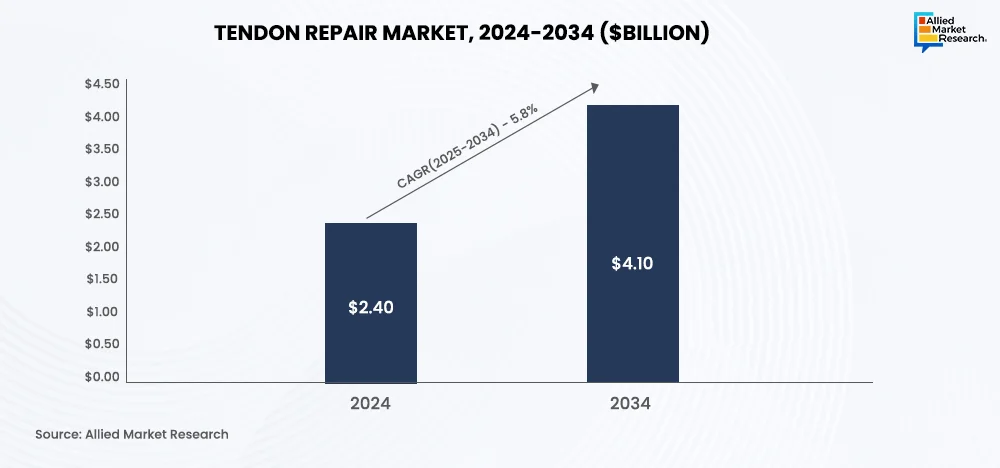
Hospital and Pre-Hospital External Defibrillator Market
The hospital and pre-hospital external defibrillator market accounted for $2.7 billion in 2023 and is estimated to garner a sum of $5.5 billion by 2035, rising at a CAGR of 6.1% during 2024-2035. External defibrillators are medical devices developed to provide a controlled electric shock to the heart to help it recover from sudden cardiac arrest or similar life-threatening medical conditions. Increase in prevalence of cardiovascular diseases across the globe has impacted the industry positively in recent times. Furthermore, Rising proportion of individuals aged 65 or above is anticipated to help the sector flourish in the coming period.
The AMR report classifies the landscape into various segments based on type and end user. By end user, the hospitals segment held the highest market share in 2023 and are anticipated to witness significant growth in the future. The increasing investments by hospitals in advanced medical infrastructure and well-equipped cardiac care units (CCUs) are expected to strengthen the position of the market in the coming period. Furthermore, the increasing volume of emergency cases is anticipated to drive industry growth.
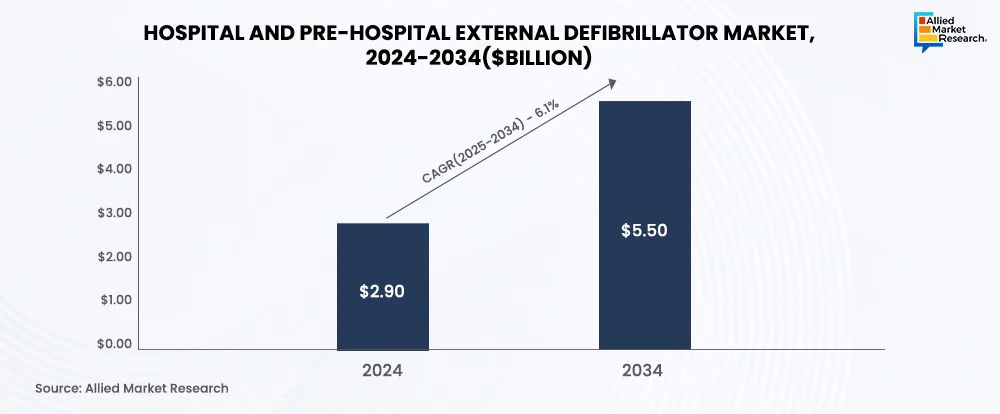
Cystic Fibrosis (CF) Therapeutics Market
Cystic Fibrosis is a hereditary genetic disease that primarily affects major bodily organs like the lungs and pancreas. Caused due to an undesirable mutation in the cystic fibrosis transmembrane conductance regulator (CFTR) gene, the disorder is characterized by the formation of sticky mucus in the lungs, which results in infection and inflammation. The recent advancements in gene therapy and genetic engineering have created favorable conditions for the growth of the industry in recent times. Moreover, growing awareness regarding the importance of early diagnosis and treatment of genetic disorders is anticipated to boost the revenue share of the market.
The cystic fibrosis therapeutics industry held a market share of $12.9 billion in 2024 and is anticipated to reach a sum of $32.3 billion by 2034, citing a CAGR of 9.6% during 2024-2034. The AMR report provides a detailed analysis of the performance of the industry in various regions across the globe, including LAMEA, Europe, Asia-Pacific, and North America. The North America region accounted for the largest revenue share in 2024 and is expected to grow rapidly in the near future. Increase in investments in healthcare infrastructure in countries like the US and Canada is anticipated to impact the sector positively.
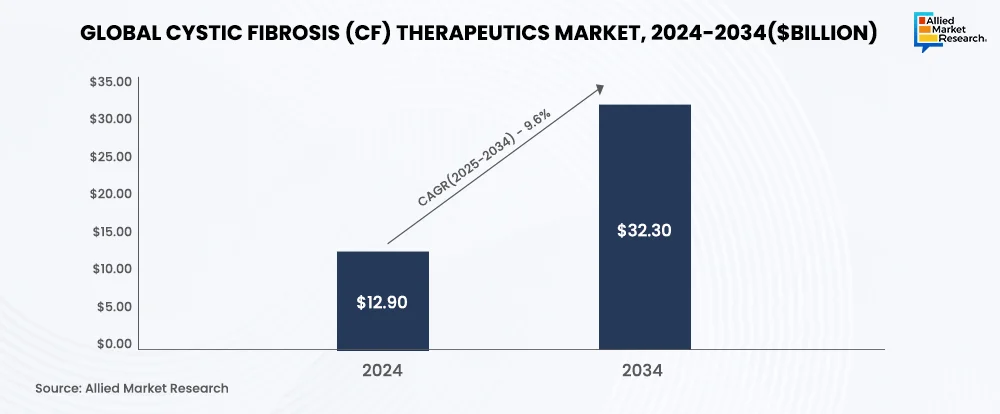
Bone Regeneration Market
The bone regeneration market was valued at $5.2 billion in 2024 and is estimated to gather a revenue share of $8.4 billion by 2034, rising at a CAGR of 4.9% during 2025-2034. Growing number of patients suffering from orthopedic disorders across the globe has accelerated sectoral growth in the past few years. Moreover, rising occurrence of bone injuries is anticipated to have a positive impact on the overall expansion of the sector in the coming period. In addition, technological advancements in stem cell therapies and 3D printing are predicted to open up new avenues for growth in the domain.
The AMR report offers a holistic segmental analysis of the market, which covers the various factors influencing the growth of various segments based on product type, application, and end user. By product type, the bone grafts and substitutes segment is projected to experience significant growth in the coming period, owing to the growing applicability in treating bone defects and fractures. Additionally, innovations in synthetic and allograft materials are expected to augment the growth rate of the market in the near future.
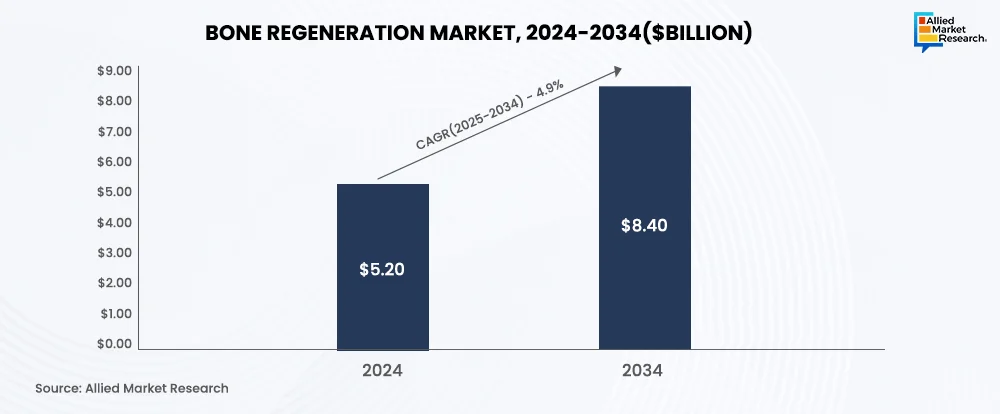
Compounding Chemotherapy Market
Compounding chemotherapy is a process of designing chemotherapy medications according to the patient’s specific needs and medical condition. The increasing prevalence of various types of cancers around the world is the primary factor influencing the growth of the compounding chemotherapy market in the past few years. The industry was valued at $5.3 billion in 2024 and is anticipated to surge at a CAGR of 6.4% during 2025-2034, thus gathering $9.8 billion by 2034. Advancements in chemotherapy delivery systems and drug preparation techniques are anticipated to generate numerous opportunities in the market. In addition, the gradual shift toward precision medicine played a huge role in widening the scope of the sector in the second quarter of 2025. Furthermore, innovations in compounding pharmacy technology are estimated to improve the growth rate of the market.
The final word
The life sciences domain has been growing at a rapid pace in the last few years due to the various technological developments in the field of drug discovery and genetic engineering. Moreover, rise in the prevalence of various lifestyle disorders and infectious diseases is anticipated to boost the revenue share of the domain in the coming period. Increasing emphasis on R& projects is predicted to help the landscape capitalize on the opportunities presented to it in Q2 2025.
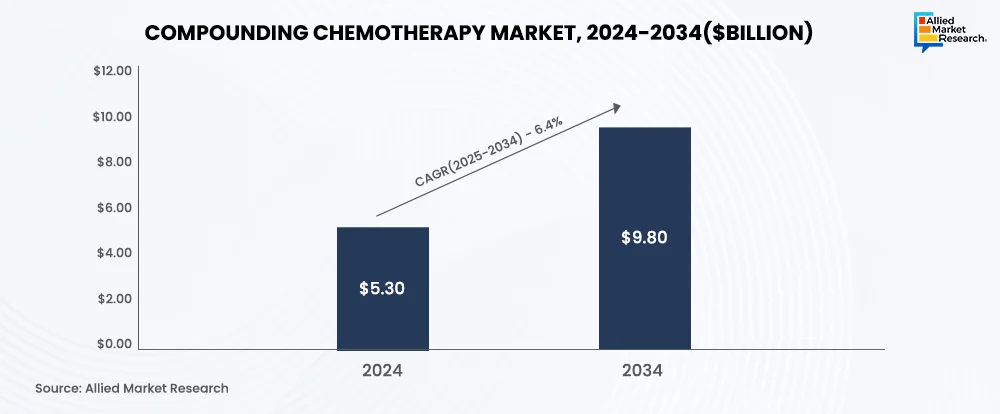
For more information on the latest growth drivers and investment opportunities in the LS industry, contact our experts, today!



